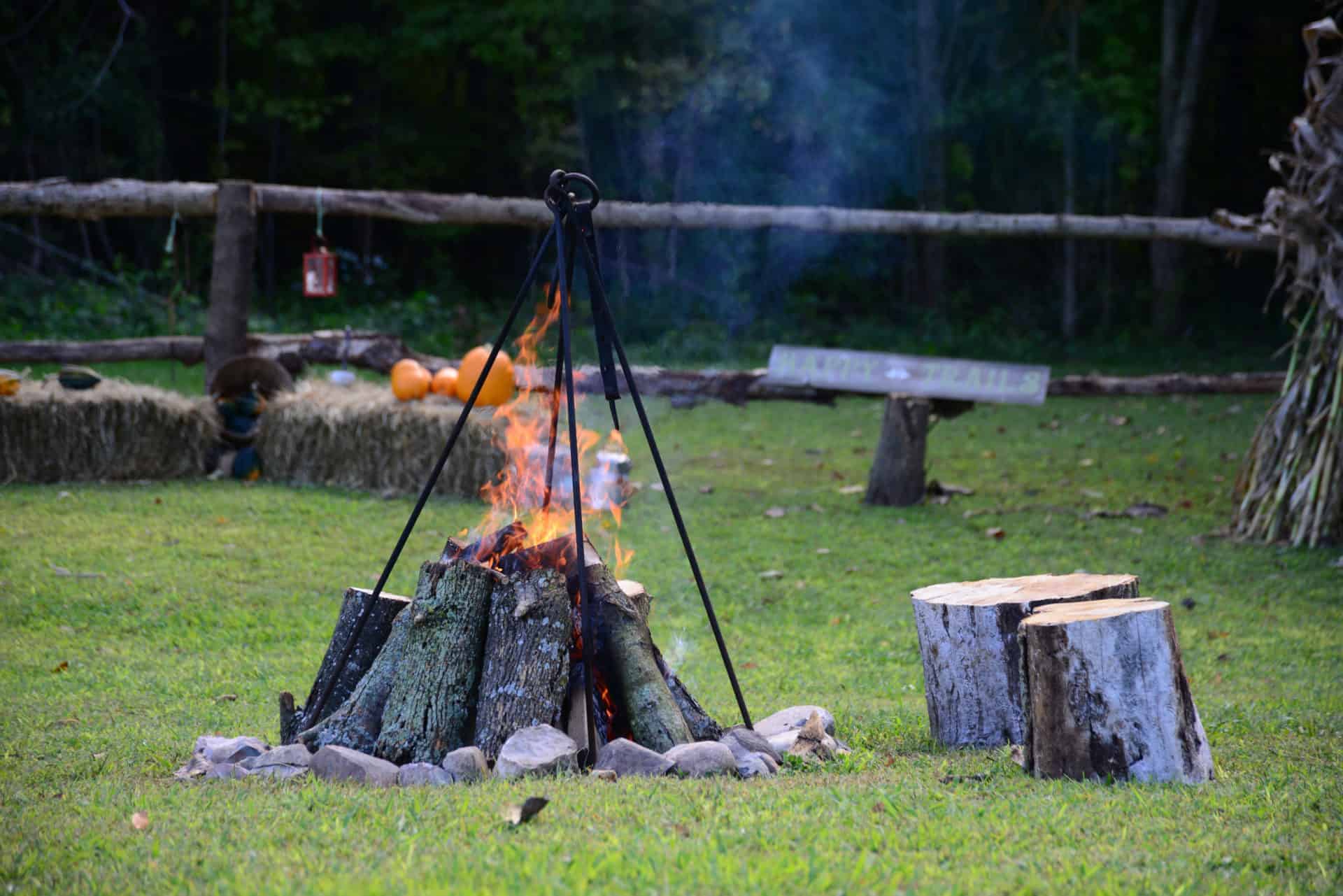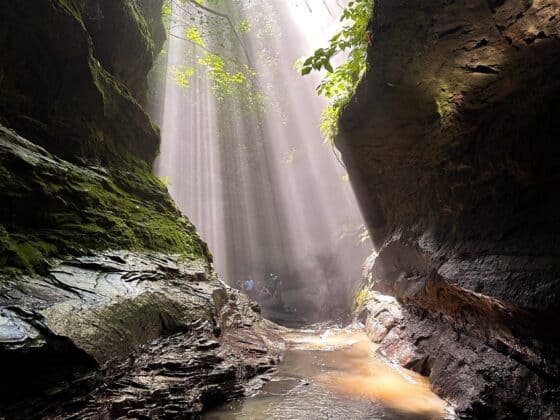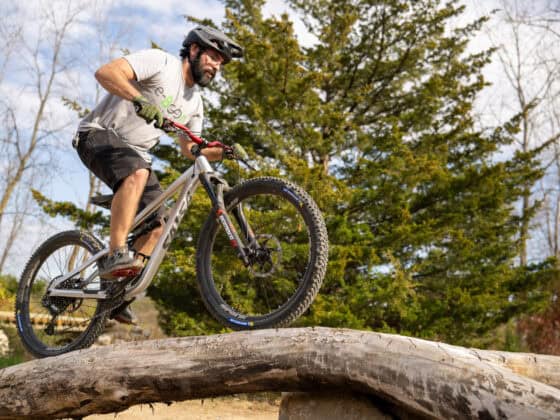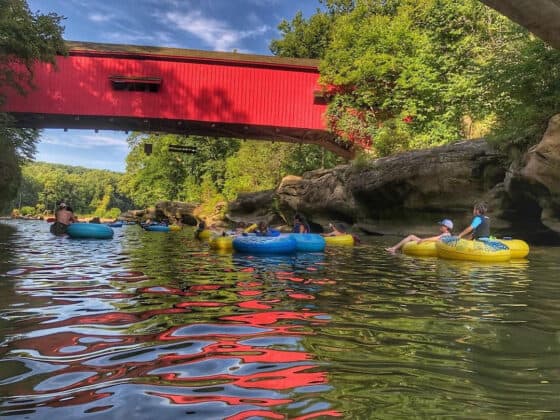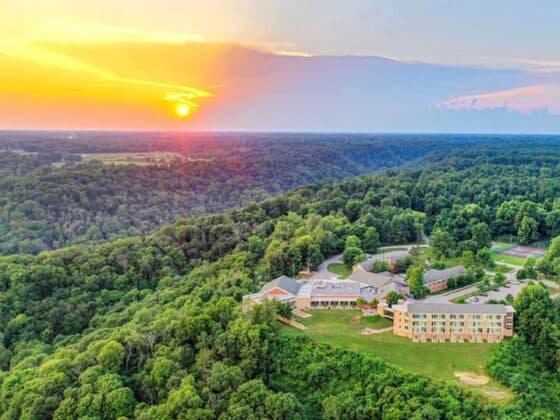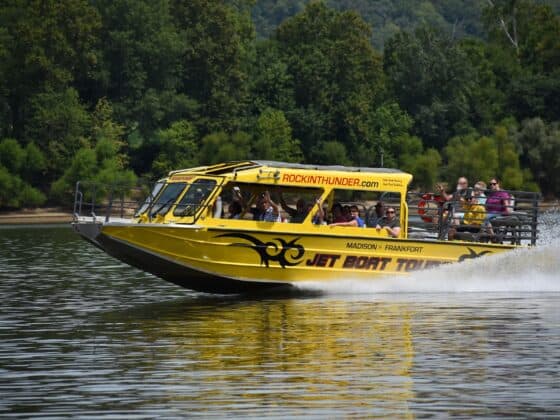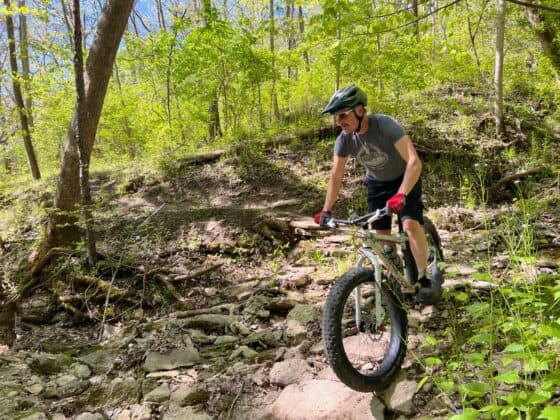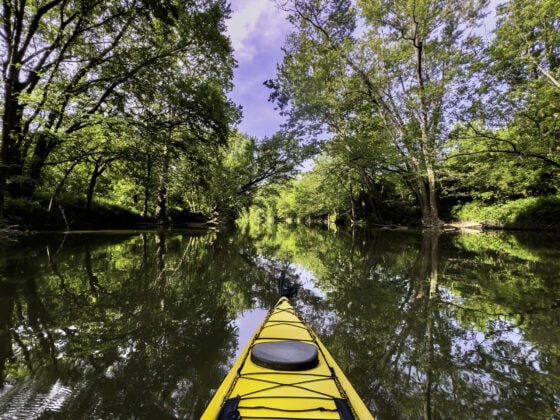Story by Scott Roberts
Photos by Indiana DNR
A group of friends sitting around a campfire with sticks and marshmallows or their favorite foods stuck on the end, roasting them to perfection
while swapping stories of the day’s activities is an iconic scene.
Maryellen Steward of Columbus said there’s something about campfires that just makes them soothing, though she can’t put her finger on what.
“There’s no better way to relax and put your troubles aside then sitting by a fire,” she said.
She has a favorite recipe for those times. She uses hamburger or sausage, adds potatoes, carrots, mushrooms, onions, and any other vegetables she and her party feel like eating, adds some olive oil and herbs, wraps it in aluminum foil, and lets it cook— no need for a stick. She calls her concoctions “hobos”, and she says they are delicious.

Creating the fire to get the experience you want can be challenging, especially for first-time campers. Aaron Douglass, interpretive naturalist for Turkey Run and Shades state parks, described three ways campers can set up their fire to get it burning fast and get the hobos—or whatever else cooking.
The first way is the teepee method. Put your kindling materials on the bottom and your wood in a teepee shape on top so when the flames start, they will reach all of your wood. The second way is the log cabin. To use this method, build your wood like a cabin you would make out of Lincoln logs in a square around the fire.
The third method is the one Douglass prefers because he considers it the easiest. It’s called the lean-to option and is created by putting a log in the center of the fire pit, then leaning a couple of other logs leaning against it so the fire will spread from the central log to all of the logs touching it.

When starting your fire, Douglass said to avoid using lighter fluid. While it can help bring about flames easier, the fire can also get out of control
much quicker.
Make sure the fire you create is not too tall. Fire rings are placed in campgrounds to stop fires from spreading, and if a fire is too tall, it can leap over the rings and catch leaves, grass, or other flammable materials outside the fire area.
Never leave your fire unattended. Fires are unpredictable and can quickly get out of hand if the wind changes or a log falls out of the ring.
Make sure the wood for your fire is safe to burn. More than 140 pests in Indiana can live and be moved in firewood, including emerald ash borer. Indiana has firewood regulations to stop this spread. Firewood brought into DNR properties must be kiln dried scrap lumber with no bark, or come from an Indiana location with all bark removed. If the wood contains a USDA or state compliance stamp, it can also be brought in. Most DNR campgrounds sell firewood on site, so it may be easiest to buy it while on property, ready to burn.

When you’re finished with the fire, be sure to put it out correctly. Douglass said the best way to extinguish a fire is with cold water, and there should be a spigot nearby if you’re at a state park. Just fill up a bucket and dump it on the fire.
“That makes a pretty sweet and satisfying sound,” he said.
Then get a stick and stir water, ashes, and coals together to make sure the water gets everywhere and put the back of your hand near the coals to feel if it is still warm. If so, get more water and repeat until cool.
When you’re finished with your fire, make sure the area is clean for the next campers. Douglass said he’s seen too many campsites where trash is piled in firepits instead of taken out of the campground and disposed of. Burning the trash is discouraged because it can leave bad remains for others to deal with. Some plastics, when burnt, emit noxious fumes that can hurt campers and the ecosystem.
By following a few safety tips, you can repeatedly create your own ideal campfire scene. Use your own recipes or make the classic s’mores.
Start your adventure by finding a campsite at camp.IN.gov or calling 1-866-622-6746.


